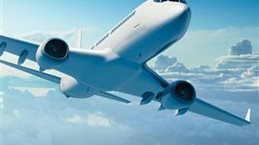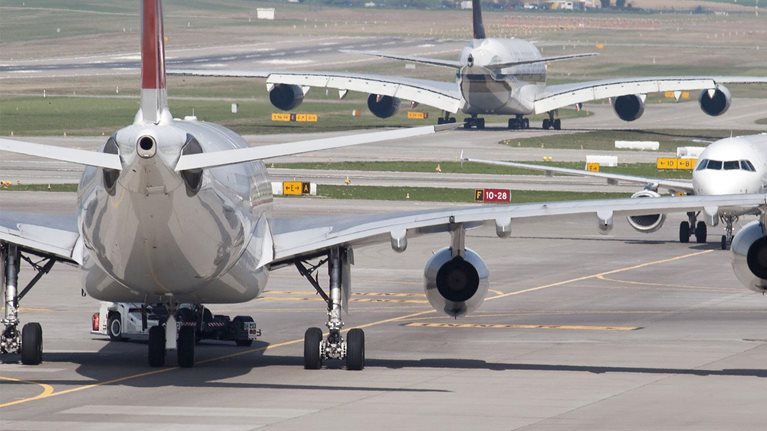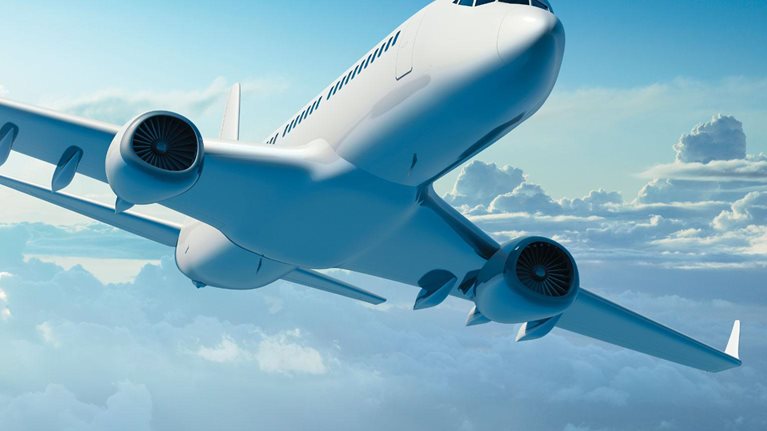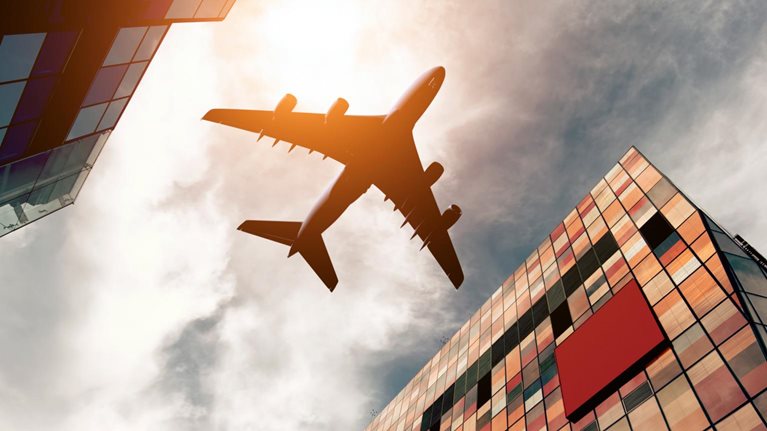Return on invested capital (ROIC) is increasingly becoming the benchmark metric for airline financial performance. On the face of it, this is not surprising. This is, after all, a business of capital deployment: airlines are landlords of aluminum (and now graphite) real estate. So measuring carriers against traditional profit-and-loss measures such as EBITDA or, worse, EBITDAR—earnings before interest, taxes, depreciation, amortization, and restructuring or rent costs—is on some level like a landlord measuring his profit before the cost of his buildings.
Stay current on your favorite topics
So we need to think about capital. Unfortunately, as we all know, the industry doesn’t do too well on this measure. If we look at the major industries, airlines rank near the top on revenue growth but at the absolute bottom in terms of ROIC. If we ranked all companies in the world in terms of ROIC, I don’t think an airline would show up in the top 100. This is not new. The airline industry in aggregate has not earned ROIC greater than its cost of capital in any year in its history, until 2015. But one year hardly signals a trend. Why is this the case, and how can airlines do better?
The traditional argument points to industry structure as the culprit. Long lead times for new capacity, low barriers to entry, high barriers to exit, perishable inventory, high elasticity, high supplier power, and a government regulatory framework that doesn’t always help carriers, all contribute to cutthroat pricing, excess capacity, and value transfer to suppliers over time. Investors should probably just pack their bags and go home. The industry value-chain analysis McKinsey has done with the International Air Transport Association over the years reinforces this argument: deep losses, not made up for elsewhere in the value chain. The industry is doomed.
But, despite its poor performance, the industry has continued this way for over 70 years. And it continues to both attract new capital and generate breakout winners, who, though small in number, seem to be breaking the pattern. Given the poor history, why do people continue to invest, and what can we learn from the winners? Either this is the longest-lasting Ponzi scheme in history, or there’s something going on beneath the surface.
We can approach these questions by examining two slightly opposing lines of argument:
-
ROIC is the right measure for industry performance, and the few airlines that have made positive returns on capital over time suggest a path forward for the rest of the industry.
-
There’s something not right about how we’re measuring capital and cost of capital. Despite appearances, we’re doing better than we think.
Let’s start with the first argument and look at the airlines that seem to be outperforming the pack.
Would you like to learn more about our Travel, Logistics & Transport Infrastructure Practice?
A clear path to better ROIC
There are 13 airlines that have earned their cost of capital over the ten years to 2015 (Exhibit 1). This is an arbitrary time frame, but let’s take a look and see if we can find patterns. First, it’s clear that there are outliers. Second, there are a few brand-new airlines. It’s worth noting that this is one of the few capital-intensive industries in the world where being new is an advantage. The accounting standards for everything from aircraft maintenance to labor costs favor new entrants. If the true life-cycle costs of running an airline at maturity were applied to these new airlines, they would not look so good.

If we reflect on this list and expand it to perhaps another ten or so airlines that are generally profitable, we see some common attributes. Not all airlines share all these attributes, but at least a few are at work in every case:
-
Privileged sources of revenue. It goes without saying that the best way to make money in any industry is to have a unique offer of some kind. These airlines have done a pretty good job. If we look at a simple measure of the number of origination and destination pairs in which these airlines have a significantly more attractive schedule than the rest of the industry, we see a clear pattern. These airlines are using a combination of their hubs, their fleet, and their geography to create markets that no one else can serve quite as well. A high score on the quality of service index equals a better product. Passengers value this and are willing to pay for it.
-
Cost advantage to peers. Again, no big surprises. In a commoditized industry, cost matters. But these airlines recognize that you don’t need to have the lowest cost in the industry. You just need a cost advantage to your relevant peer set. These carriers achieve an advantage in various ways. Some use regulatory frameworks that make labor markets more efficient. Others have embraced lean management, driving cost out of every single detail. Some have adopted driver-based planning, a construct that builds a budget from commitments the business makes around physical drivers of productivity and cost, and then centers performance reviews on those same drivers.
-
A brand that people care about in some way. Years ago, McKinsey put researchers in a large terminal building that served multiple airlines. As passengers entered, we stopped them for a series of questions. One of the questions was “What airline are you flying today?” Twenty percent of passengers could not answer the question without checking travel documents. It’s pretty hard to differentiate when your passengers don’t care whether or not you exist. Many of the most profitable airlines have invested heavily in brand presence. Alaska Airlines has invested in its products, service, and reputation. Emirates has invested in both product and promotion. In some markets, easyJet is almost a verb. And even Ryanair, with its reputation for unpredictable customer service, can count on one thing: people know who they are and what they stand for. This results in more direct distribution, greater control of the customer relationship, greater ancillary sales and, simply, less competition.
-
Strong organizational health. McKinsey has a research tool that measures nine attributes of organizational health (the way in which an organization functions), based on the answers given by managers and employees to a long questionnaire. The outcome of this tool, which we call the “Organizational Health Index,” correlates very strongly to performance. I’ve been in the halls of many higher-performing airlines, and I can tell you that they feel distinct. The management team is aligned; everyone knows the role they play; people are accountable. At these airlines, people spend time with their teams, driving performance, and not in meetings, debating causes.
-
Lower capital needs. At a few of these carriers, it’s worth noting that less capital may play a role. Delta is now famous for its aging fleet. It may have a point. Its older aircraft allow it to fly less—fitting capacity to demand and driving better schedules for customers and, therefore, better-quality revenue. Allegiant, the highest-ROIC airline in the group, uses a very old fleet. As you can see from the analysis, the trade-off between older aircraft and younger ones diminishes as fuel prices drop and interest rates rise (Exhibit 2).

-
Emphasis on short haul. Last, we note that there are a number of shorter-haul airlines on this list. While this is a crude metric, the bottom line is that under a wide range of assumptions, a new 787 employed in long-haul service generates less revenue per dollar of capital employed than does its short-haul counterpart. Sure, the margins also vary, but the difference between long- and short-haul is stark.
So while some of these carriers enjoy geographic advantages, and some enjoy government constructs that really help them, it’s useful to at least reflect on what the industry might do differently. At bare minimum, the list above suggests that we should possibly consider different key performance indicators (KPIs) than those that the industry now uses. Load factor, yield, revenue per available seat-kilometer, and cost per available seat-kilometer are outcomes. KPIs like percentage of privileged passengers, net promoter score, on-time performance, and, yes, gate agents per departure suggest the ingredients that lead to performance. These metrics are also very helpful in the context of managers’ performance reviews. This is an industry in which, if a functional leader doesn’t make budget, it’s very easy to point to external factors: fuel prices, volcanoes, wars, terrorist attacks, strikes. But, if the head of airports has committed to reduce gate staffing from 2.5 agents per departure to 1.5, then he or she ought to be held to that commitment under any circumstances.
Maybe we’re doing better than we think?
Let’s shift to the second, slightly contradictory argument. We’ve seen that ROIC as we’re currently measuring it is an elusive goal. And while we’ve seen some patterns among those that do well, not all airlines have the freedom to pull all of these levers. So is ROIC the right measure? Are we measuring it correctly? Let me present at least a few provocative challenges. At the core of those challenges is the question of whether aircraft are really capital.
-
The cash-on-cash business case for new, high-capex aircraft (versus the older aircraft they replace) is generally quite positive. Put differently, the operating cash flow covers the lease or interest payments plus accounting depreciation. While carriers may not cover their cost of capital in financial terms, the business tends, at least on paper, to pay for its capital. That said, the fully costed financial business case, including disposal costs, residual value risk, and so on is overwhelmingly negative. In a sense, then, airlines “pay for” their capital but don’t “earn” their cost of capital.
-
There don’t appear to be limits on external sources of aircraft capital. We tend to think of capital as a scarce resource and something that airlines need to carefully direct. Many airlines have run out of growth opportunities. But few solvent airlines have ever been told “no” by a lessor or a banker.
-
Do carriers ever really make a commitment on aircraft? Unlike factories and R&D, aircraft are portable and can be repossessed. The Cape Town protocols make that even more the case than ever.
-
Is weighted average cost of capital (WACC) overstated? The implied value of airline equity is zero, and aircraft-backed debt is cheap. So while a WACC of 8 to 9 percent might be appropriate for an airline building a skyscraper, is it really the right number to be used when buying an aircraft?
-
Last, when airlines capitalize leases, they are incorporating the profit of the lessor into the capital charge. Of course, the lessor is taking on residual value risk, and thus doing something for that capital. However, the fact that carriers no longer have the risk suggests a lower capital charge, not a higher one.

The clairvoyant airline
On the surface at least, there’s a case to be made either that aircraft aren’t the same kind of capital as traditional big capex investments, or that the industry’s WACC is widely overstated. Either would suggest that the industry is doing better than we think. In fact, if we made a list of the airlines with positive free cash flow over the last ten years, it would be much longer than the list we looked at earlier.
All that said, ROIC has to matter somewhere, to someone. While an airline’s decision to purchase an airplane can be undone—the aircraft can be sold—the manufacturer can’t unbuild the aircraft. So if airlines are doing better than we think, does that mean that someone else is doing worse? Perhaps not now, but this might—at some point—have to be the case. Consider the earlier analogy of a Ponzi scheme. If we look at the airline industry flow of funds over the past 50 years, we see a cycle in which new aircraft-backed debt replaces old debt. The operating efficiencies of the new aircraft helped to create additional cash flow that made it easier to pay off the debt. The result was, yes, positive cash returns—but also mounting debt, with no sign of a cyclical return. Could it be that the airlines in their WACC calculations and measurements of ROIC are overstating the risk and opportunity cost of buying aircraft, but that the banks and lessors are understating the risk and opportunity cost of lending against them?
I’ve made two slightly contradictory arguments about airline ROIC. In the first, I accept that ROIC is both properly measured and an appropriate metric for airline financial performance, and assert that the industry has something to learn from the few airlines that do well on this metric. In the second, in the spirit of being provocative, I wonder whether we are measuring ROIC appropriately and whether, in fact, the industry is doing better than we think. We can leave the second argument for financial academics to ponder. If any of these ideas are useful and pragmatic, they are those in the first argument. Measurements aside, I’d argue that airlines have nothing to lose by focusing on deliberate improvements in privileged sources of revenue, cost position versus peers, brand strength, and organizational health. It’s a winning recipe against any set of metrics.


